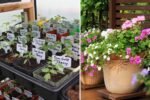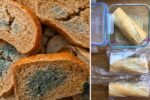Join on WhatsApp
Get the latest updates directly on WhatsApp – motivation, news & more!
Mushrooms are a unique and fascinating addition to any kitchen, offering rich flavors and impressive nutritional benefits. Many people assume that growing mushrooms requires a backyard or a garden, but in reality, you can cultivate delicious, fresh mushrooms right at home even in small apartments or spaces without outdoor access. Growing mushrooms indoors is both accessible and rewarding, and with the right tools and a little patience, you can enjoy your own homegrown fungi year-round.
If you’ve ever wanted to try your hand at mushroom cultivation but thought it was too complicated or required outdoor space, this guide will walk you through the simple steps to get started. No garden needed.
Understanding Mushroom Basics
Before diving into growing mushrooms, it’s helpful to understand what mushrooms actually are. Mushrooms are the fruiting bodies of fungi. Unlike plants, they don’t need sunlight to grow because they get their energy from organic material. Instead of seeds, mushrooms grow from spores, which germinate and form a network of mycelium kind of like the roots of a plant, but much finer.
Mushrooms grow best in damp, dark, and cool environments, which is why many species thrive in forests or shaded areas. At home, this means you can recreate their ideal growing conditions using kits or DIY setups that provide the right moisture, temperature, and substrate (the material they grow on).
Choosing the Right Mushroom Variety
The first step in growing mushrooms at home is picking a variety that suits beginners and indoor growing. Some mushrooms are easier to cultivate and more forgiving of minor mistakes.
Popular and beginner-friendly mushroom varieties include:
- Oyster mushrooms: Fast-growing and adaptable, they flourish on straw, coffee grounds, or sawdust. They come in different colors and have a mild, delicate flavor.
- White button mushrooms: The classic grocery store mushroom, they grow on composted manure and require slightly more care.
- Shiitake mushrooms: Known for their rich, earthy flavor, they grow on hardwood logs or sawdust blocks and take longer to fruit but are worth the wait.
- Lion’s mane: A unique mushroom with a fluffy, white appearance and brain-boosting benefits, it grows on hardwood sawdust or logs.
For beginners, oyster mushrooms are often the easiest and quickest to grow indoors.
Getting Started with Mushroom Growing Kits
The simplest way to start growing mushrooms indoors is by using a mushroom growing kit. These kits come with everything you need: pre-inoculated substrate (usually straw or sawdust) already colonized with mushroom mycelium, a container or bag, and instructions.
Mushroom kits are convenient because they take the guesswork out of the process, and most kits are designed for indoor use. They typically require a humid environment and indirect light. You simply mist the substrate regularly and keep the temperature in the ideal range, usually between 55°F and 75°F, depending on the variety.
Kits usually produce several flushes of mushrooms before the substrate is spent, giving you fresh mushrooms for weeks or months.
Creating Your Own DIY Mushroom Setup
For those who want to experiment beyond kits, growing mushrooms from scratch is also possible with a little preparation. Here’s a basic outline of the process:
- Get mushroom spawn: This is the mushroom equivalent of seeds but contains live mycelium. Spawn can be purchased online or from specialty stores.
- Choose your substrate: Different mushrooms prefer different substrates. Straw, hardwood sawdust, coffee grounds, and even cardboard can work depending on the species.
- Prepare the substrate: This usually involves soaking or pasteurizing the material to kill competing organisms.
- Inoculate the substrate: Mix the spawn into the prepared substrate in a clean environment to avoid contamination.
- Incubate: Keep the inoculated substrate in a dark, warm, and humid place until the mycelium fully colonizes it.
- Fruiting: Move the colonized substrate to a cooler, humid area with indirect light. This triggers mushroom growth.
- Harvest: When mushrooms reach the desired size, carefully cut or twist them off at the base.
While more labor-intensive than kits, DIY growing offers a deeper connection to the process and more control over the environment and mushroom types.
Maintaining Ideal Conditions for Growth
Maintaining the right growing conditions is key to successful mushroom cultivation indoors. Here are some important factors to monitor:
- Humidity: Mushrooms need high humidity usually between 80 and 95 percent to develop properly. Mist your substrate regularly or use a humidity tent or chamber.
- Temperature: Different species have optimal temperature ranges, but most indoor varieties like oyster mushrooms fruit best between 55°F and 75°F.
- Light: Mushrooms don’t need direct sunlight but benefit from indirect light to help orient their growth. A spot near a north-facing window or artificial grow lights on a low setting works well.
- Airflow: Good air circulation helps prevent mold and contamination. Avoid stagnant air but also avoid strong drafts that dry out the substrate.
Using a small spray bottle, a humidifier, and monitoring tools like a thermometer and hygrometer can help maintain these conditions.
Common Challenges and How to Overcome Them
Growing mushrooms at home comes with a few common challenges, but most can be easily managed:
- Contamination: If you see green, black, or pink mold growing on your substrate, it’s a sign of contamination. Always work in a clean environment, sanitize tools, and use pasteurized or sterilized substrate.
- Dry substrate: Mushrooms need moisture to grow. If the substrate dries out, mist regularly and cover it with a plastic bag or humidity tent to retain moisture.
- Slow or no growth: This could be due to incorrect temperature, low humidity, or insufficient colonization of the substrate. Double-check your conditions and be patient.
- Fruit body deformation: Sometimes mushrooms grow oddly shaped or stunted due to poor air circulation or inconsistent moisture.
With experience, you’ll learn to anticipate these issues and adjust your setup accordingly.
Harvesting and Using Your Homegrown Mushrooms
Harvesting mushrooms is simple but requires timing. Pick them when caps are fully open but before they start to flatten or curl up. Cut or twist the mushrooms gently at the base, and avoid pulling to prevent damaging the mycelium.
Freshly harvested mushrooms can be used in countless recipes, from soups and stir-fries to salads and sauces. They also store well in the fridge for several days or can be dried for longer storage.
Growing mushrooms at home not only gives you fresh ingredients but also a fun, hands-on project that connects you to nature even if you don’t have a garden.
Growing mushrooms at home is a rewarding hobby that requires minimal space and no garden at all. Whether you start with an easy kit or try your hand at DIY cultivation, you’ll soon enjoy fresh mushrooms on demand. With the right knowledge and care, your indoor mushroom garden can flourish year-round, adding both flavor and fascination to your kitchen.
Would you like tips on mushroom recipes or advice on sourcing spawn and substrates?




